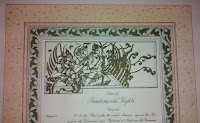Sri M.R.Jambunathan - Vedic Scholar
 |
| Sri M R Jambunathan |
Bangalore Tamil Sangam has a library with good books in Tamil. I took life membership of the Tamil Sangam, soon after my arrival at Bangalore fifty years ago.
I got the opportunity to read many good Tamil Books from there. Here only for the first time I saw the Tamil Translation of all four Vedas .Interestingly the copies of the books have been autographed by the author.
These extraordinary translations were done by a Vedic Scholar Sri M.R.Jambunathan. This great person was born to vedic scholar Manakkal Ramaswami Avadhani and Lakshmi Ammal in 1896. Though a scholar in Sanskrit,Hindi and English Sri Jambunathan loved his mother tongue Tamil. The result of it are his translations.
After completing his studies in Civil Enginerering, Sri Jambunathan shifted to Mumbai (Bombay). He served as Civil Engineer in Mumbai Municipal Corporation. As one who had spent most of his life at Mumbai, he started the first Municipal Tamil School there for the down trodden in 1924 in Dharavi. Attracted by the philosophy of liberal thoughts of Maharshi Swami Dhayananda Saraswathi for a Caste less Society he joined the Arya Samaj and translated the Hindi book "Sathyartha Prakash" Magnum opus of the Swamiji into Tamil.
 |
| Rig Vedam in Tamil |
Sri Jambunathan wanted to abolish untouchability from the society. He spent his entire life in the uplift of socially and economically deprived sections of ther society. This greatman had dedicated the Tamil translation of "Sathpatha Brahmanam" of Yajur Veda at the holy feet of Harijans.He contended that Vedic truths are common for every one and they should reach the masses. The result was his attempt to translate all the four Vedas into his mother tongueTamil. He spent his entire life for this purpose. Translations of Yajur, Sama and Athartvana Vedas were published during his life time He had spent thirty years for translating Rig Veda . But, the first part of Rig Veda Translation was released by his wife Smt Shanthi Jambunathan only after his demise.
Apart from Vedas, Sri Jambunathan had written many books on subjects of the Upasnishads, the Bahmanas, Yoga, teachings of Confucious and others in Tamil
Sri Jambunathan who passed away in 1974 had spent his entire life for translating Vedic Literature and upliftment of untouchables, has brought out 16 books in Tamil and 3 books in English during his life time. I am writing this with the desire to remember this great man who had done single handed the work that should have been done by an institution.
Due to muinificence of his daughter Smt Indira Anantharam Iyer and son in law his Tamil Translations were republished in 1991 and are available in the following website of Arya Samaj:
http://www.vedicgranth.org/home/the-great-authors/mr-jambunathan/veda










